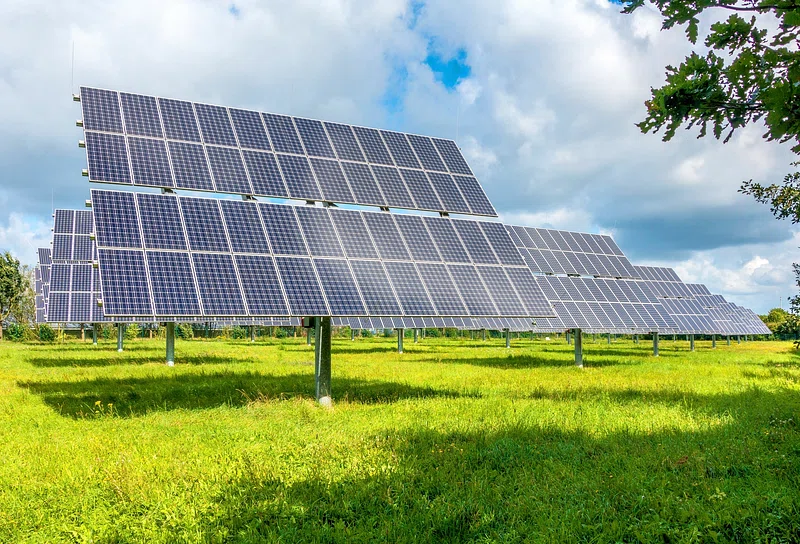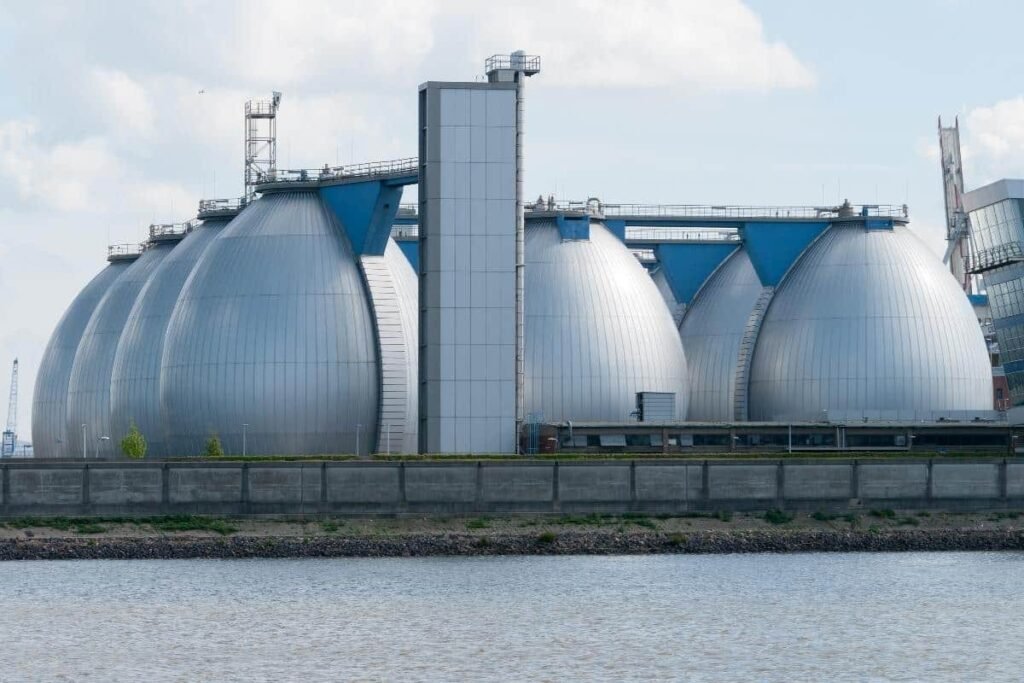Introduction: A New Dawn in Energy
India stands on the brink of a monumental transformation in its energy sector. The shift from fossil fuels to renewable sources marks a new dawn, a commitment to sustainability that promises a brighter, cleaner future for the nation.
Historical Context: India’s Energy Landscape
Early Dependence on Fossil Fuels
For decades, India’s energy matrix relied heavily on coal and oil. These non-renewable resources powered industries, homes, and transportation, but at a significant environmental cost.
The Rise of Renewable Energy Awareness
The late 20th century saw a growing awareness of the environmental impacts of fossil fuels. Gradually, the conversation shifted towards renewable energy, setting the stage for a green revolution.
Government Initiatives and Policies
National Solar Mission
Launched in 2010, the National Solar Mission aimed to establish India as a global leader in solar energy. With ambitious targets, it has driven significant growth in solar power capacity.
Wind Energy Development Programs
Wind energy programs have flourished, particularly in states like Tamil Nadu and Gujarat. These initiatives have made India one of the world’s largest producers of wind energy.
The Role of State Governments
State governments have been pivotal in driving the green energy agenda. By offering incentives and creating favorable policies, they have catalyzed local renewable energy projects.
Technological Innovations
Advancements in Solar Technology

Recent years have witnessed remarkable advancements in solar technology. High-efficiency photovoltaic cells and innovative solar panel designs have made solar energy more accessible and affordable.
Breakthroughs in Wind Turbine Efficiency

Wind turbine technology has evolved, with new designs maximizing efficiency and output. These advancements have reduced the cost per kilowatt-hour, making wind energy a viable alternative to traditional power sources.
Emerging Technologies in Biomass and Hydro Power
Innovations in biomass and hydro power technologies are also gaining traction. These renewable sources are being integrated into India’s energy mix, diversifying the nation’s renewable portfolio.
Economic Impacts
Job Creation in the Green Sector
The green energy revolution has spurred job creation across various sectors. From manufacturing and installation to maintenance and research, millions of jobs are emerging in the renewable energy industry.
Cost-Benefit Analysis of Renewable vs. Non-Renewable Energy
While initial investments in renewable energy can be high, the long-term benefits are substantial. Lower operational costs and reduced environmental impact make renewables an economically sound choice.
Environmental Benefits
Reduction in Carbon Footprint
Switching to renewable energy sources significantly reduces India’s carbon footprint. This shift is crucial in combating climate change and mitigating its adverse effects.
Improvement in Air Quality
Renewable energy projects contribute to better air quality. By reducing emissions from fossil fuels, they help decrease the prevalence of respiratory illnesses and other health issues.
Preservation of Natural Resources
Renewables help preserve finite natural resources. Unlike fossil fuels, sources like solar and wind are abundant and sustainable, ensuring long-term energy security.
Challenges and Barriers
Financial Constraints
Despite the benefits, financial constraints pose significant challenges. High initial costs and limited access to financing can hinder the growth of renewable energy projects.
Infrastructure Limitations
Infrastructure limitations, such as inadequate grid connectivity and storage solutions, can impede the integration of renewable energy into the national grid.
Policy and Regulatory Hurdles
Complex regulatory frameworks and inconsistent policies can create obstacles for renewable energy projects. Streamlining these processes is essential for fostering growth.
Role of Private Sector
Investments by Indian Corporates
Indian corporates are increasingly investing in green energy. These investments not only support sustainability but also enhance corporate social responsibility profiles.
International Partnerships and Collaborations
International collaborations bring in expertise, technology, and funding. Partnerships with global renewable energy leaders are accelerating India’s green energy transition.
Community and Grassroots Movements
Local Initiatives in Rural Areas

Grassroots movements in rural areas are driving the adoption of renewable energy. Solar lanterns, biogas plants, and microgrids are transforming lives in remote communities.

Urban Green Energy Projects
Urban centers are also embracing green energy. Rooftop solar panels, electric vehicles, and smart grids are becoming common sights in cities across India.
Success Stories
Case Study: Gujarat’s Solar Power Revolution
Gujarat’s solar power revolution stands as a beacon of success. The state’s proactive policies and investments have resulted in one of the largest solar parks in the world.
Case Study: Tamil Nadu’s Wind Energy Expansion
Tamil Nadu has become a wind energy powerhouse. Its extensive wind farms and supportive government policies have made it a leader in renewable energy.
Future Prospects
Projected Growth of Renewable Energy in India
The future looks promising for renewable energy in India. Projections indicate continued growth, driven by technological advancements and supportive policies.
Potential for Innovations and New Technologies
The potential for further innovations is immense. Emerging technologies in energy storage, smart grids, and electric mobility promise to enhance the efficiency and reliability of renewable energy systems.
India’s Global Role in Green Energy
Contributions to Global Climate Goals
India’s green energy initiatives contribute significantly to global climate goals. The country is playing a crucial role in the international fight against climate change.
Participation in International Green Energy Forums
India actively participates in international green energy forums. These platforms enable the exchange of ideas and best practices, fostering global cooperation in renewable energy development.
Consumer Awareness and Education
Public Awareness Campaigns
Public awareness campaigns are vital in promoting green energy adoption. Educating the public about the benefits of renewables helps drive consumer demand and support for these technologies.
Integration of Green Energy Topics in Education
Integrating green energy topics into educational curricula ensures that future generations are knowledgeable and supportive of sustainable practices.
Financial Incentives and Subsidies
Government Subsidies for Renewable Energy Projects
Government subsidies play a crucial role in making renewable energy projects financially viable. These incentives encourage investments and help offset initial costs.
Tax Incentives for Green Energy Adoption
Tax incentives for individuals and businesses adopting green energy solutions further promote the transition to renewables. These incentives make green energy a more attractive option.
The Role of Non-Governmental Organizations
Advocacy and Policy Influence
Non-governmental organizations (NGOs) are pivotal in advocating for renewable energy policies. Their efforts influence government decisions and promote sustainable practices.
Implementation of Grassroots Projects
NGOs also implement grassroots projects, bringing renewable energy solutions to underserved communities. These projects have a direct, positive impact on local populations.
Impact on Traditional Energy Sectors
Transition of Coal and Oil Industries
The transition to renewable energy impacts traditional energy sectors. Coal and oil industries must adapt, either by diversifying their portfolios or transitioning to more sustainable practices.
Retraining and Redeployment of Workforce
Retraining and redeployment of the workforce are essential to ensure that workers from traditional energy sectors can transition to jobs in the renewable energy industry.
Sustainability and Long-Term Goals
India’s Vision for 2050
India’s vision for 2050 includes a comprehensive plan for sustainable development. This vision encompasses renewable energy, resource conservation, and environmental protection.
Integration of Sustainable Practices in Industries
Industries across India are integrating sustainable practices. From reducing waste to optimizing energy use, these efforts contribute to a greener future.
Technological Integration
Smart Grids and Energy Storage Solutions
Smart grids are revolutionizing the way energy is managed and distributed. By integrating renewable energy sources and advanced metering technologies, smart grids enhance efficiency and reliability.
Internet of Things (IoT) in Energy Management
The Internet of Things (IoT) is transforming energy management. IoT devices enable real-time monitoring and control of energy consumption, optimizing efficiency and reducing waste.
Health Benefits
Reduction in Respiratory Diseases
The shift to renewable energy sources leads to a reduction in respiratory diseases. By minimizing air pollution, green energy contributes to better respiratory health among the population.
Improvement in Overall Public Health
Beyond respiratory health, green energy has broader impacts on public health. Cleaner air and water, along with reduced exposure to harmful chemicals, improve overall well-being.
Conclusion: The Path Ahead
India’s journey towards a sustainable future is well underway. The green energy revolution is not just about adopting new technologies; it’s a fundamental shift towards a cleaner, healthier, and more sustainable way of living. With continued government support, private sector investment, and community participation, India is poised to lead the world in green energy and set an example for others to follow.
Follow Humstory for more content.













